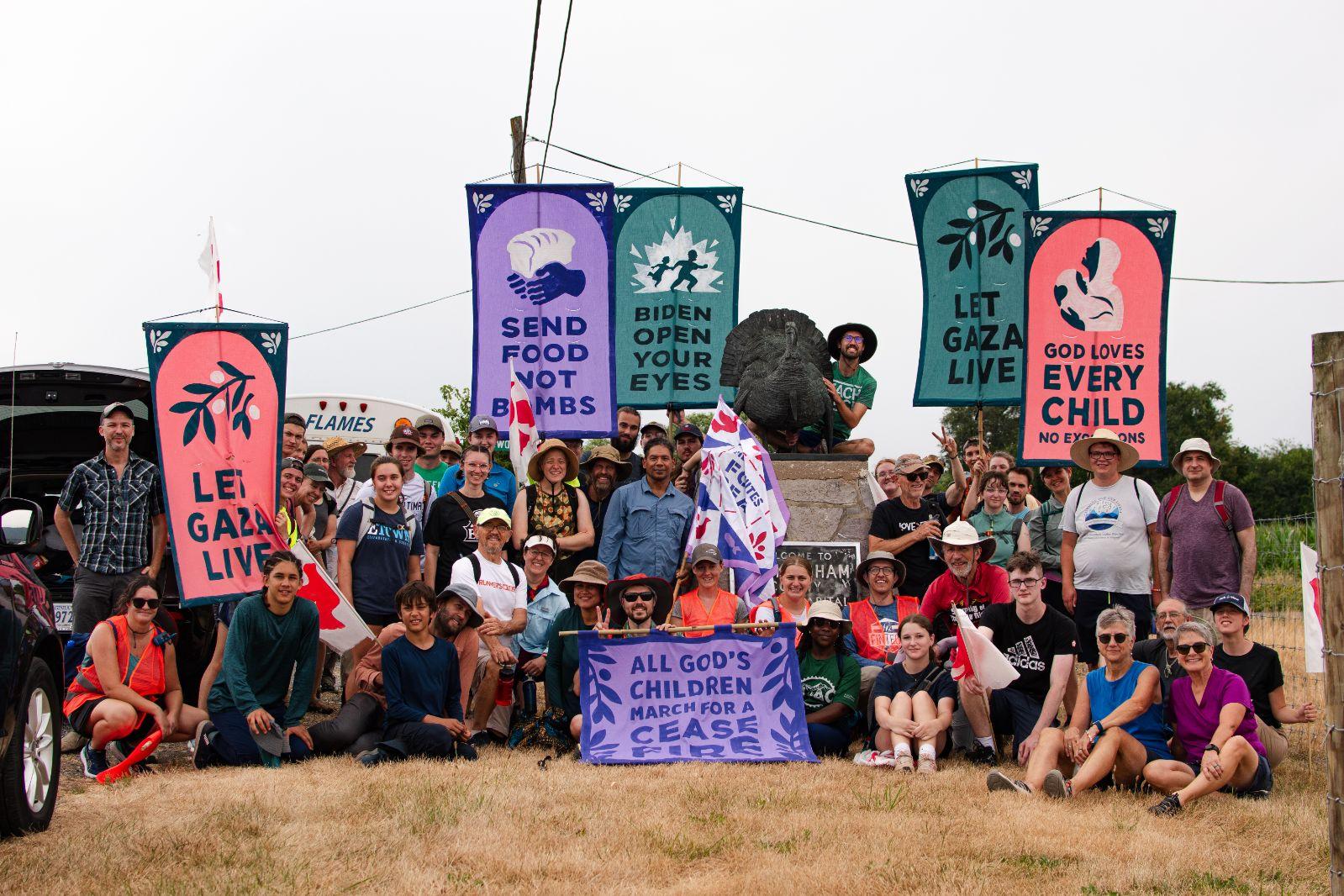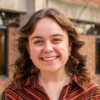Over the summer, 50 Mennonites embarked on a 135-mile walk, determined to make their voices heard amidst the heat of mid-July. Carrying signs and banners adorned with messages of peace and calls to action, the participants made up the initial group of the “All God’s Children March for a Ceasefire,” an endeavor organized and supported by social justice organization Mennonite Action.
The march from Harrisonburg, Virginia to Washington, D.C. served to call attention to the “suffering, death, and destruction unfolding in Gaza,” while urging the United States government to support a peaceful and timely end to the occupation of Palestine by Israeli forces, according to the Mennonite Action website. Once in D.C. an interfaith coalition of over 500 participants joined together to peacefully protest the lobbying efforts of the organization, Christians United for Israel.Mackenzie Miller and Jacob Stoltzfus, two Goshen College students, participated in the march. Miller, a sophomore communication major, and Stoltzfus, a junior computer science major, both marched for the first three days of the 11 day event, starting in Harrisonburg and traversing a total of 39.5 miles to the foot of the Blue Ridge Mountains.
“I chose to participate mostly because for a while before I heard about it, I’d known about the situation in Gaza and was somewhat frustrated with our country’s seeming ability, or choice, to do nothing,” Stoltzfus said.
Miller and Stoltzfus iterated that each day began with a 6 a.m. wake up call, breakfast and a short devotional. The group set out at 8 a.m. each day so the six or seven hours of walking would be finished before the most intense heat of the day. In the evenings, the participants would have a time of singing, listening to Palestinian stories, and reflecting about the events of the day.
“It was definitely a disruptive action,” Miller said about the march. The route the marchers followed took them along the shoulders of highways in rural Virginia and eventually, through the densely populated suburbs of Washington D.C.. “I think that was helpful in being visible, but also in helping others feel seen by our actions,” Miller said.
Stoltzfus and Miller both continually stated their opinion that this march was a way to be physically seen and visible, and to draw immediate attention to the Palestinian people from those they passed by. While they acknowledged that most of the attention they received was positive, some was not.
“There were a few middle fingers, there were a few people just shouting things, but they were driving by so fast we couldn’t hear them,” Miller said. “I think the worst it got was, the very first day, there was a truck in the other lane that kind of swerved really close to our march and that was, I mean, a bit scary, definitely dangerous.”
In addition to the reactions of passers-by, the participants faced other challenges as well. Tales of blisters, sore feet and achy bodies abounded in Miller and Stoltzfus’ accounts.
“Walking for long periods of time with sore feet certainly does bond people,” Stoltzfus joked. “Over our three days, I think we would have actually walked the distance of one end of Gaza to the other. It was kind of interesting to think about … Though we’re walking a similar distance, what the people of Gaza have to be going through to be moving this amount of distances with no support; no guarantees of safety.”
However, despite the challenges for both Miller and Stoltzfus, it was the community around that gave them courage and motivation to keep going.
“There was definitely a lot of grief and anger that we were all holding,” Miller said. “But I think because we were able to do that in a community like we had, it kind of kept us all grounded in what we were there to do.”
Stoltzfus shared similar experiences of the way that community positively impacted the experience. “A large part of what made this march possible was the generosity of just, almost random people,” Stoltzfus said. He went on to explain that many nights, the group would stop to camp in the backyards of people in the area who were willing to share their land for one day. He also stated that some of his favorite memories were the times spent talking with others and listening to music while marching.
Miller, who returned to participate for the last two days of the march in D.C., found herself left with a more profound perspective of the entire experience while in front of the White House and alongside the members of the coalition.
“It was important for me to be there and to put into action this theology of pacifism that I’ve grown up with and hold as an important part of my identity,” she said. “It’s easy to kind of get lost in the headlines or on social media, and being able to put that anger into action, into peacemaking, that was very important to me in figuring out how to process it all.”




